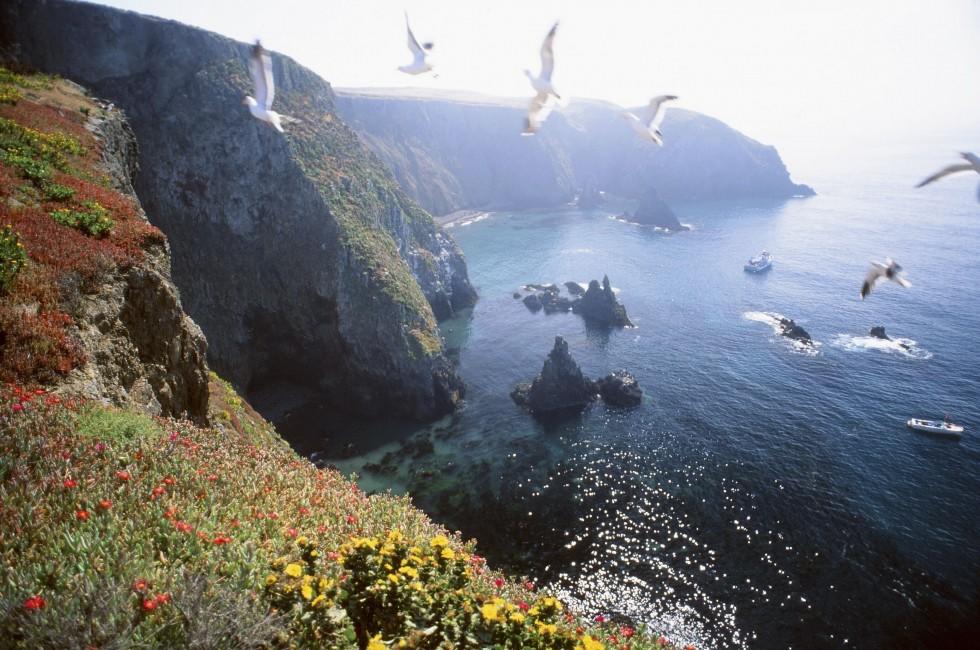Channel Islands National Park
Channel Islands National Park
On crystal-clear days, the craggy peaks of Channel Islands are easy to see from the mainland, jutting from the Pacific in sharp detail. Sometimes called the North American Galápagos, they form a magnificent nature preserve, home to many native plants, land animals, and marine creatures—some found nowhere else on the planet.
Established in 1980, the national park includes five of the eight Channel Islands—ranging in size from 1-square-mile Santa Barbara to 96-square-mile Santa Cruz—and the nautical mile of ocean that surrounds them. If you visit East Anacapa in spring or summer, you'll walk through a nesting area of western gulls. If you're lucky enough to get to windswept San Miguel, you might see as many as 30,000 pinnipeds (seals and sea lions) camped out on the beach. You can k...
Read MoreOn crystal-clear days, the craggy peaks of Channel Islands are easy to see from the mainland, jutting from the Pacific in sharp detail. Sometimes called the North American Galápagos, they form a magnificent nature preserve, home to many native plants, land animals, and marine creatures—some found nowhere else on the planet.
Established in 1980, the national park includes five of the eight Channel Islands—ranging in size from 1-square-mile Santa Barbara to 96-square-mile Santa Cruz—and the nautical mile of ocean that surrounds them. If you visit East Anacapa in spring or summer, you'll walk through a nesting area of western gulls. If you're lucky enough to get to windswept San Miguel, you might see as many as 30,000 pinnipeds (seals and sea lions) camped out on the beach. You can kayak close to the seals (as long as you don't disturb them) or snorkel or dive amid some of the world's richest kelp forests. Even traveling on an excursion boat gives you a chance to view sea lions, brown pelicans, and spouting whales.
Scientists have uncovered many treasures during decades of research on these relatively undeveloped islands. Archaeological evidence at Santa Rosa Island’s Arlington Springs site shows that people lived in coastal California 13,000 years ago and traveled by watercraft throughout the region. The native Chumash lived on the islands until the late 1700s, when Spaniards settled in California. Unfortunately, European diseases and the demise of the trade-based economy devastated the indigenous population, and the few remaining Chumash islanders left in 1816–17. Over the ensuing decades, other humans set up fishing and otter hunting camps and built ranches on the islands; the U.S. Navy also established several military installations. All commercial operations have now ceased, and the park has embarked on an ambitious project to restore the natural habitats.
Relatively few people travel out to the park. If you're among the few who do make the effort, know that a splendid land-and-sea wilderness—minus the crowds—awaits.








